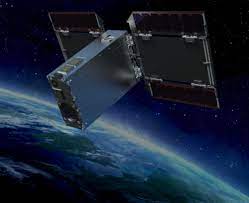Tested water propulsion for orbiting satellites

A Japanese space propulsion company launched its first experimental water thruster technology into space aboard a SpaceX Falcon 9 shared launch mission earlier this month, a press release reveals.
The company, called Pale Blue, has installed its technology on a Sony nanosatellite. The Japanese tech giant has chosen Pale Blue to supply its experimental propulsion technology for its Star Sphere project, which will provide 4K video of space for artistic and educational purposes.
The first satellite of Sony's Star Sphere project was launched along with 113 other satellites as part of SpaceX's Transporter 6 rideshare mission on Jan. 6. The CubeSat, dubbed Star Sphere-1, features a full-frame camera. It is also equipped with a Pale Blue water vapor propulsion system, which will allow the first space demonstration of its technology, expected in the coming days.
Pale Blue's press release explains that its small thruster will extend the life of the small satellite by 2.5 years with small periodic orbital correction maneuvers. The company explains that the water vapor propellant is also a greener solution as part of the growing demand for CubeSats, small satellites that require a longer lifespan. The compressed water vapor is then used instead of different propellants to propel the satellite through space using small jets, thus allowing the orbital readjustments necessary to prolong its mission.
“I am very pleased that our safe, sustainable and low-cost water propulsion system can contribute to this project and we are committed to the development of the space industry,” said Jun Asakawa, CEO and co-founder of Pale Blue.
Pale Blue was founded in 2020. The company is developing several water propulsion systems based on research conducted by the University of Tokyo and the Japan Space Agency (JAXA).
The water propulsion eliminates the risks associated with the use of other chemical propellants, even in the event of reentry, and is extremely ecological. An alternative is solar sail propulsion: the Light Sail 2 mission demonstrated that flight with light is possible. Using a 32-square-meter (244-square-foot) sail made of mylar to raise the orbit of a small CubeSat spacecraft by 1.9 miles (3.2 km). Essentially, all a light sail CubeSat mission needs is this sail to keep itself in orbit for a surprisingly long time using only photon energy from sunlight. Another safe and practical solution for orbital flight.

Thanks to our Telegram channel you can stay updated on the publication of new articles from Economic Scenarios.
The article Water propulsion tested for satellites in orbit comes from Scenari Economici .
This is a machine translation of a post published on Scenari Economici at the URL https://scenarieconomici.it/testata-la-propulsione-ad-acqua-per-i-satelliti-in-orbita/ on Wed, 01 Feb 2023 08:00:19 +0000.
